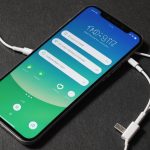Understanding Battery Life Challenges
Many smartphone users face challenges with their device’s battery life, which can often be traced back to specific factors. One major culprit is the operation of background applications. Apps running in the background can significantly drain battery power, often without users being aware. These apps may engage in activities such as retrieving data, sending notifications, or refreshing content, all of which consume energy.
Another factor is the screen brightness and display settings of the smartphone. The energy consumption needed to maintain high-quality visuals can rapidly exhaust a battery. A screen’s brightness setting can dramatically influence battery longevity; thus, adjusting this to lower levels can offer a notable extension in usage times.
Additional reading : Revamp Your Smart Home Lighting: The Ultimate Smartphone Handbook for Customizing Ambiance for Any Occasion
Lastly, various other settings and features can also affect smartphone battery life. For example, location services and high-resolution displays can enhance user experience but at the expense of energy efficiency. Understanding the impact these features have is crucial for optimizing battery performance. Users can take proactive measures to address these issues, thus improving their device’s battery sustainability. Recognizing and managing these common challenges are key steps towards maintaining a longer-lasting smartphone battery.
Essential Settings for Battery Optimization
To make the most of your smartphone’s battery life, it’s crucial to focus on battery optimization settings. Small adjustments can lead to significant improvements.
Also read : Discover the cutting-edge smartphone camera innovations to watch for in 2023
Adjusting Screen Brightness
One fundamental step is to effectively manage screen brightness. High brightness levels can quickly deplete battery power. Lowering brightness settings extends usage without compromising functionality. Consider enabling auto-brightness, which adjusts to ambient light levels, providing an efficient balance in battery optimization settings. Explore your device’s settings for accessibility options that may enhance visibility with lower brightness.
Modifying App Background Activity
Managing background app activity is another critical area. Apps that constantly update and send notifications can drastically affect performance. Adjusting these settings can greatly enhance battery life. Ensure that only essential apps have permission for background refresh, reducing unnecessary energy consumption. This will optimize smartphone usage by maintaining performance while saving battery.
Configuring Location Services
Battery optimization settings also include managing location services. Although pivotal for many apps, continuous location access can be a drain on power. Only allow location access for apps that genuinely require it. Utilize settings to permit these services only when the app is in use, thereby providing efficiency without sacrificing utility.
Additional Tips for Extended Battery Life
To effectively extend smartphone battery life, consider the role of Wi-Fi and mobile data. Continual connectivity, especially in areas with poor reception, can quickly drain battery resources. Disabling mobile data when Wi-Fi is available and stable can mitigate unnecessary use. Alternatively, switching off Wi-Fi in areas with no connectivity helps conserve power.
Another important aspect is utilizing battery saver modes. These built-in settings automatically optimise various phone functionalities to prolong battery lifespan, such as reducing screen brightness and limiting background data. Enable these modes when necessary to maximise efficiency without compromising essential operations.
Regular app updates play a crucial part in maintaining battery efficiency. Developers consistently enhance app performance and energy consumption through updates. Keeping apps up-to-date ensures optimal functioning and reduces any impact on battery resources. Therefore, it is advisable to periodically check and install app updates, whilst verifying the legitimacy of the update source to avoid potential security risks.
Being mindful of these practices can significantly enhance your smartphone’s battery performance, allowing for longer usage throughout the day. With proper management, sustaining a healthy battery life is achievable, even with frequent device use.
Troubleshooting Common Battery Issues
Experiencing battery drain on your smartphone can be frustrating. Identifying the apps that drain battery is a good starting point. Begin by checking your device’s battery settings to see which apps consume the most power. Usage statistics can reveal patterns, helping you target problematic applications.
If you’ve pinpointed the culprits, take these steps to rectify common battery problems:
- Update Apps: Ensure all apps are running the latest versions as updates often include efficiency improvements.
- Remove Unnecessary Apps: Consider uninstalling apps you seldom use. Each app installed on your phone may engage background tasks, increasing battery consumption.
- Adjust Settings: Lowering screen brightness and modifying app refresh settings, as previously discussed, can aid in conserving energy.
Sometimes, despite your best efforts, battery issues persist. In such cases, knowing when to consider professional help for battery issues is crucial. Reduced battery capacity over time is sometimes inevitable. If your device consistently underperforms or shuts down unexpectedly, a battery replacement might be necessary. Consulting with certified technicians ensures that you receive informed advice and quality service, keeping your smartphone’s battery health in check.
Comparing iOS and Android Settings
Navigating different operating systems like iOS and Android can reveal distinct approaches to battery management. Each offers unique functionalities designed to prolong battery life without compromising user experience.
Battery Saver Features on iOS
iOS provides robust battery management features aimed at enhancing productivity. A key feature is the Low Power Mode, which reduces background app activity and screen brightness. It can be manually activated or automatically engage when the battery dips below a certain percentage, offering a balanced approach to preserve lifespan.
Battery Optimization on Android
Android systems, in contrast, emphasize customizability with their battery optimization features. Users can tailor settings such as background limits for specific apps and use the Battery Saver mode, which restricts background data usage. This granularity helps optimize battery usage according to individual preferences.
Key Differences Between Operating Systems
The key differences between iOS and Android lie in customization and automation. iOS offers a more streamlined interface with limited user intervention, favoring automatic processes. Android, however, lets users delve deeper into parameters, adjusting settings more precisely. Understanding these differences is crucial for users choosing between platforms while focusing on battery efficiency.











